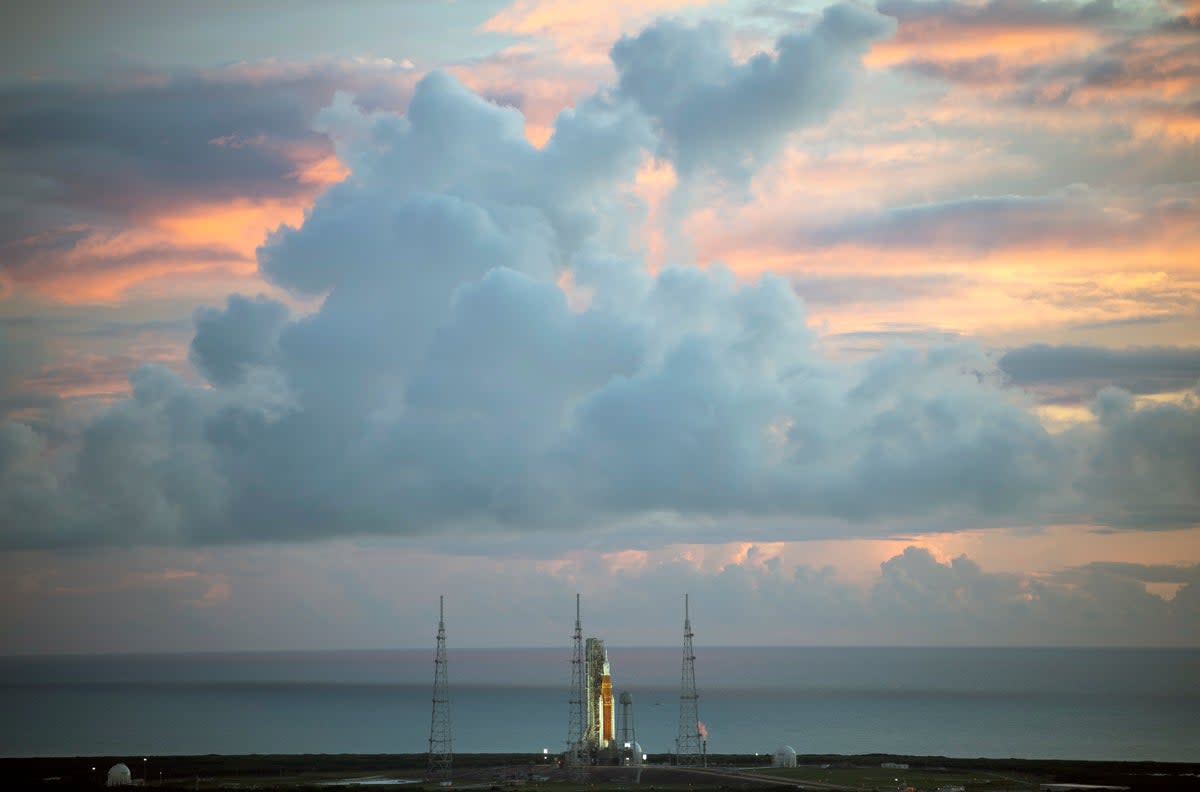Nasa scrubs Artemis launch after failing to fix moon rocket’s engine bleed

- Oops!Something went wrong.Please try again later.
Nasa was forced to abort the debut launch of its moon rocket on Monday after failing to fix a critical issue with one of its engines.
The Space Launch System was set to lift off from the Kennedy Space Center in Florida as part of the Artemis 1 mission, but the countdown was put on hold at T-minus 40 minutes due to an unresolved engine leak.
“We don’t launch until it’s right,” said Nasa Administrator Bill Nelson. “It’s just illustrative that this is a very complicated machine.”
The SLS is the largest rocket Nasa has ever built, offering roughly 15 per cent more thrust than the Saturn V rockets that took humans to the moon as part of the Apollo missions.
Artemis 1 will see the SLS launch the Orion spacecraft on a six-week voyage, taking it around the moon before splashing down in the Pacific Ocean.
Nasa hopes the success of the uncrewed mission, captained by a crash-test dummy called Commander Moonikin Campos, will provide enough data for it to proceed with the first crewed missions set for May 2024.
The Artemis program, named after Apollo’s twin sister in Greek mythology, comes nearly 50 years after the last lunar landings. The US space agency plans to eventually establish a permanent human colony on the moon. This base will then be used to launch astronauts to Mars, though this is unlikely to happen before the end of the decade.
Monday’s setback was the result of a problem with one of the four main engines, which launch engineers spotted after filling the core stage fuel tanks with liquid hydrogen and oxygen.
The issue meant that the engine was unable to reach the correct temperature in time for the scheduled lift-off.
“Launch controllers were continuing to evaluate why a bleed test to get the [engines] to the proper temperature range for lift-off was not successful, and ran out of time in the two-hour launch window,” Nasa said in an update. “The Space Launch System rocket and Orion spacecraft remain in a safe and stable configuration.”
The conditioning of the engines was meant to be tested during a “wet dress rehearsal” in June, but engineers had been unable to do so.
It was not the only glitch in the build-up to the cancelled launch, but a liquid hydrogen leak and a frost formation were both successfully troubleshooted before they were able to jeopardise the launch countdown.
Another issue was causing an 11-minute delay in communications between Orion and ground crew, though it is not clear if this would have been resolved in time for the launch.
“We are stressing Orion beyond what it was actually designed for in preparation for sending it to the moon with a crew and we want to make sure that it works absolutely perfectly when we do that and that we understand all the risks,” said Bob Cabana, Nasa’s Associate Administrator, ahead of the launch.
“This is a test flight, all right, and it’s not without risk. We have analysed the risk as best we can, and we’ve mitigated also as best we can.”
Thousands of people lined the beaches in Florida in the hope of catching a glimpse of the momentous first flight for Artemis 1, fulfilling at least one of Nasa’s objectives with the programme of reigniting excitement in space exploration.
US vice president Kamala Harris was among those in attendance to watch the scrubbed lift-off, with Mr Nelson describing her as “an enthusiastic space booster”.
A new launch window is expected to open on Friday 2 September at 12.40 local time (17.40 BST), with another set for 5 September.

